Raise your hand if you know anything about Comoros other than that, perhaps, it’s some islands, somewhere. Because that’s about as much as I knew about the country. I didn’t even know it was a country, I just thought it was some islands, somewhere, that belonged to another country. 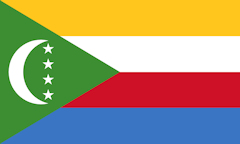 Officially the Union of Comoros, it’s a group of three larger islands, numerous small ones, and one larger contested one (that France claims as an overseas territory). It’s located to the northwest of Madagascar, the big island country off the southeast coast of Africa, on the opposite side of the island from the island countries of Reunion and Mauritius. At 719 square miles, it’s less than half the size of Rhode Island, with a population of around 850,000, compared to Rhode Island’s 1.1 million. The capital is Moroni, on the largest island, at 10 square miles and a population of about 110,000.
Officially the Union of Comoros, it’s a group of three larger islands, numerous small ones, and one larger contested one (that France claims as an overseas territory). It’s located to the northwest of Madagascar, the big island country off the southeast coast of Africa, on the opposite side of the island from the island countries of Reunion and Mauritius. At 719 square miles, it’s less than half the size of Rhode Island, with a population of around 850,000, compared to Rhode Island’s 1.1 million. The capital is Moroni, on the largest island, at 10 square miles and a population of about 110,000.
The islands first came to the attention of Europe during the era of slave trade, when slavers from Madagascar used to raid the islands for slaves, which they would then trade to the French, who at the time occupied the contested island, Mayotte, as well as Reunion and Mauritius, then known as the Mascarenes. In the 1840s, the French occupied and colonized the rest of the Comoros islands, and maintained colonial control until 1975, when all but Mayotte was granted independence. Under the French, the islands were turned into large plantations for sugar, timber, and coconuts, most of which were administered by wealthy Arab merchants… and which in the long run has resulted in the Comoros being the only Arab League nation that is fully in the southern hemisphere.
One of the least populous countries in the world, it’s also one of the most densely populated. It has a moderately high poverty level, about 20% of the population are classified as living in poverty – lower than much of Africa, but still high by world comparisons. The official languages of the country are Comorian, which is actually a group of four different Bantu languages, plus Arabic and French. The population is 98% Sunni Muslim, and 2% Roman Catholic. 90% of the population are black, the remainder mixed.
Being a fairly small, and homogenous country, the cuisine wasn’t overly difficult to figure out for our project. It’s got a strong French base, with a good dose of Arab influence, and little that I could find that would relate back to the indigenous culture. Whether that’s simply a function of what’s on the internet, or the impact of having been colonized for so long, I couldn’t say. The choice of bread and soup turned out to be quite easy, as almost every source seemed to agree on a practically nationally declared soup – Soupe Faux Pois, which literally means “fake pea soup”, something I’m at somewhat of a loss to explain, since it’s made with real peas, or at least every recipe I found online for it is. And, a ubiquitous flatbread, Mkatra Foutra, made with coconut milk, coffee, and sesame. And, away we go.
Mkatra Foutra is a pretty simple flatbread to make (there are numerous similar flatbreads in southeastern Africa with similar names). In a way, it’s almost like making pancakes, though with a thicker consistency that’s “moldable”, almost like a tortilla dough, rather than a pourable batter. We have a mix of 1 cup whole wheat flour with a half cup high gluten bread flour, 200 ml (about 7/8 cup) coconut milk, 1 egg, big pinch of salt, 1/2 tsp instant coffee, 2 tsp sugar, 1 tsp yeast, and 2 tbsp of warm water. Dissolve the yeast and sugar in the warm water and let it sit until it bubbles up nicely. I’m guessing that prior to the advent of instant coffee, the yeast was probably proved in warm brewed coffee with sugar.
Whisk the egg and coconut milk together, and mix into the dry ingredients along with the bubbling yeast. Blend well. It’s a little too soft and gooey to really knead it like a bread dough, but I used a wooden paddle and gave it a solid five minutes of mixing to help develop the gluten. You could do that more easily in a mixer with a paddle attachment. Cover and let sit for an hour and it will rise to about one and a half times the volume.
Scoop out a handful of the mixture (the above amount makes three flatbreads, half the original recipe). In a skillet over low heat, get a mix of olive oil and butter sizzling, and pat the flatbread into a flat round about 1/2″ thick, which turned out to be about 5″ across. Press a good sprinkling of sesame seeds into the top. Cook until browned underneath, then flip it and cook the other side. Remove and set aside to drain of the oil on some paper towel. Serve warm.
Again, I’m not sure why this is called Soupe Faux Pois, fake pea soup. I find myself wondering if it was a linguistic slip from soupe aux pois, or pea soup, that just stuck over time. We have a pound of fresh peas (you could use frozen), a chopped small tomato, some grated ginger, a chopped small onion, minced couple of cloves of garlic, a teaspoon of salt and a half teaspoon of cayenne, plus just shy of a cup of coconut milk (basically I took one 400ml can of coconut milk and split it between the bread and the soup). Not pictured, about 2 cups of water and a tablespoon of olive oil. And I found, at the finish, that it needed a little more salt.
Lightly brown the onion and garlic in the oil.
Add the remaining ingredients except the coconut milk.
…including the water, just enough to cover the ingredients. Bring to a boil and cook for 25 minutes until the peas are nice and soft.
Remove from the heat and add the coconut milk. Then using a handblender, or pulsing in a regular blender…
…puree the soup to a coarse puree. You want some “chunkiness” still in the soup.
And, serve. I’d reserved a couple of spoonfuls of the coconut milk just for decoration, along with some lime slices (impractical for squeezing into the soup, but prettier than a wedge, I ended up tossing it to the side and squeezing in some lime juice from a wedge). The flatbread is often served with a drizzle of honey, particularly for breakfast or as a snack. That was all well and good, but I found it a bit sweet to accompany the soup – which it probably wouldn’t traditionally.
So, I whipped up a traditional Comorian hot sauce, Poutou, which is quite simple – onion, lemon, tomato, garlic, chilies, and salt. Peel the onion, remove the seeds from the lemon, core the tomato, peel the garlic, and destem the chilies. Throw them all in the blender with a bit of salt, and puree. Adjust the salt. Done. And yes, it’s the whole lemon, peel, pith, and pulp, just minus the seeds.
And it’s a delicious hot sauce. Classicaly, I gather, it’s served with fish, and I could see that – and will make that again, because I can see it would be perfect with seafood, and probably with chicken as well. I love that citrusy note along with the bitterness from the pith, like you get in a marmalade.
I also loved it with the flatbread and soup, making a much more savory and spicy combination. And, traditional or not, that’s probably the way I’d serve it again. And I would make, particularly, the soup again. It just has some really interesting notes, different from the more traditional pea soups we see in North America. First, it’s vegan, as is the bread (if you eat it with something other than honey). And the browning of the onion and garlic, plus the hit of ginger and cayenne, just give it a different dimension. I loved it and wished I’d made a full batch rather than a half. But, easy enough to make again!
Next time, we’re off to Costa Rica. Pura Vida!
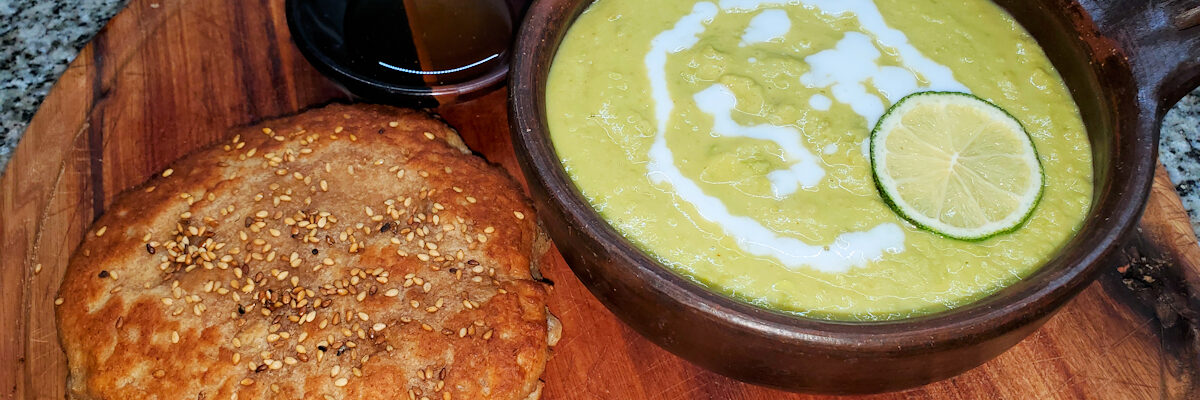
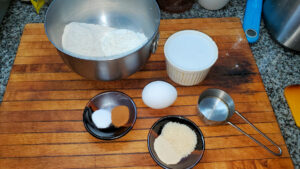
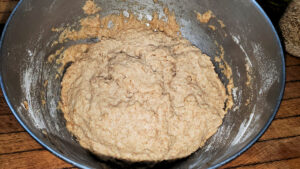
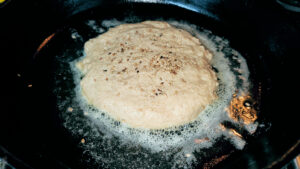
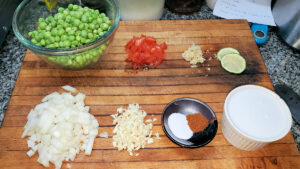
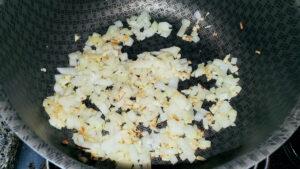
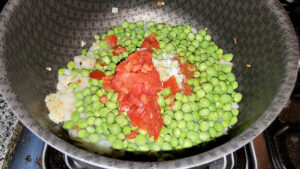
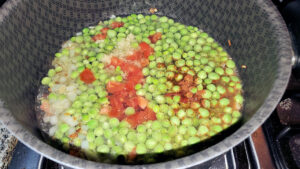
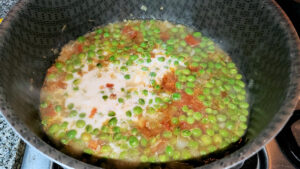
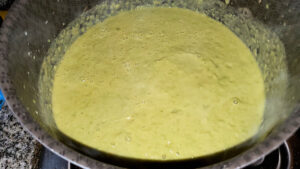
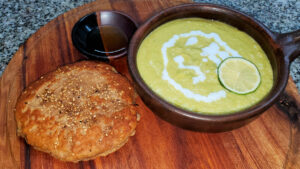
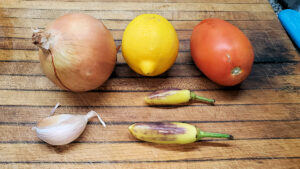
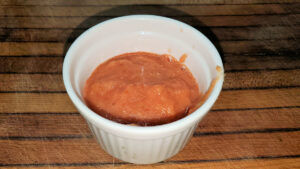
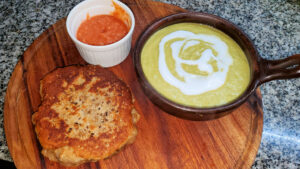
[…] time we head back to Africa and the country of Comoros, about which, I know absolutely nothing other than that it’s an island somewhere off the […]